Adventurous Kate contains affiliate links. If you make a purchase through these links, I will earn a commission at no extra cost to you. Thanks!
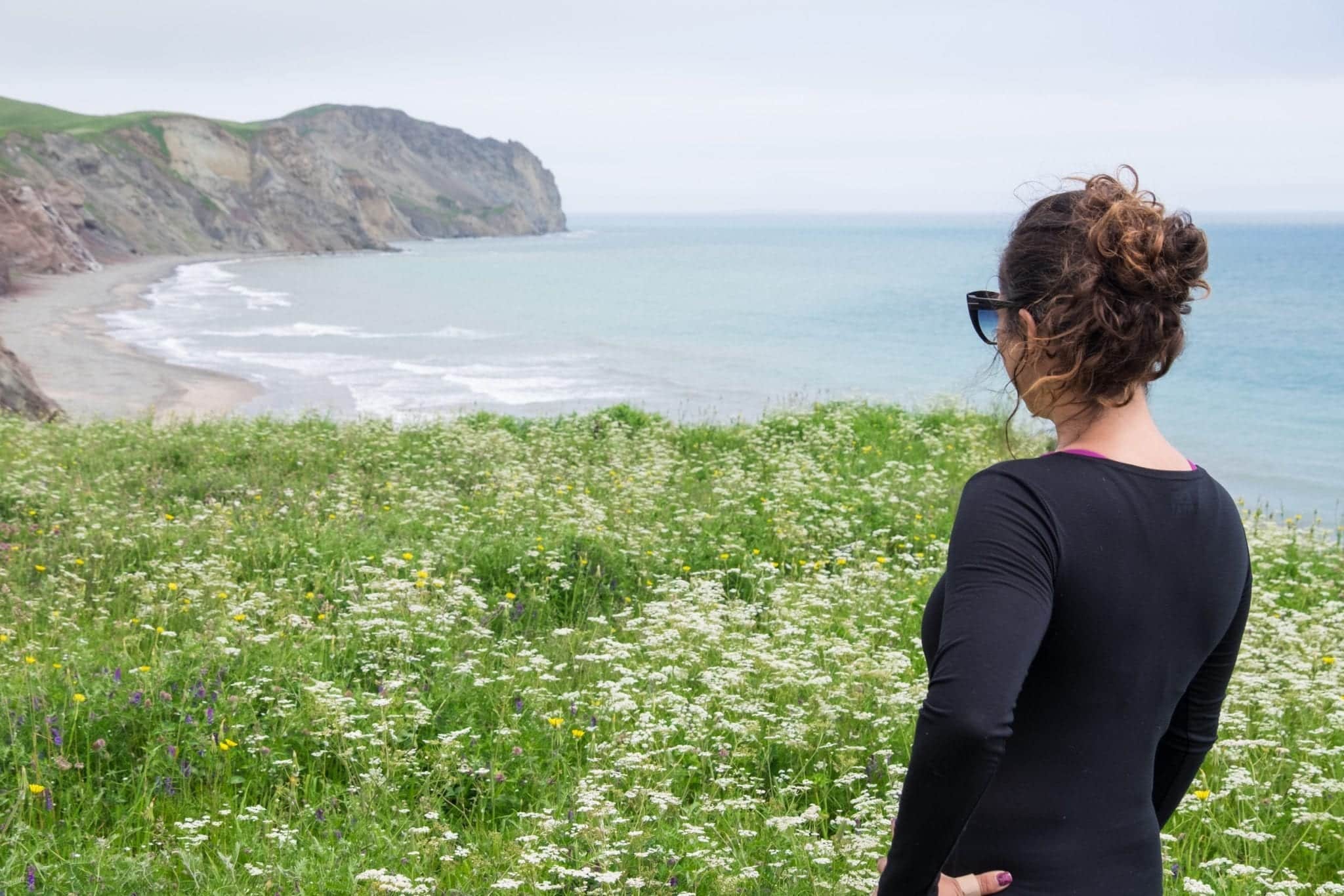
The Îles-de-la-Madeleine are a mysterious archipelago just north of Prince Edward Island in Canada. They’re isolated, hard to reach, and precariously perched in the Gulf of St. Lawrence, where the wind whips like mad and erosion threatens their existence.
But these are islands of great beauty — of bright red cliffs and lighthouses, of purple cottages and seal colonies, of craft beers and creamy cheeses and lobster rolls served in the back of mini-marts.
This July I traveled on a 10-day expedition cruise of Eastern Canada with OneOcean Expeditions. I became interested in this journey because it visits so many random, hard-to-reach places in Atlantic Canada. But I got most excited when I saw the Isles-de-la-Madeleine on the itinerary — the destination I wanted to visit the most!
The expedition was fantastic — one of the best trips I’ve taken in a long time. And by the end of the voyage, despite the incredible places we visited, the Îles-de-la-Madeleine were my favorite.
What was it about these islands that stole my heart?
Table of Contents
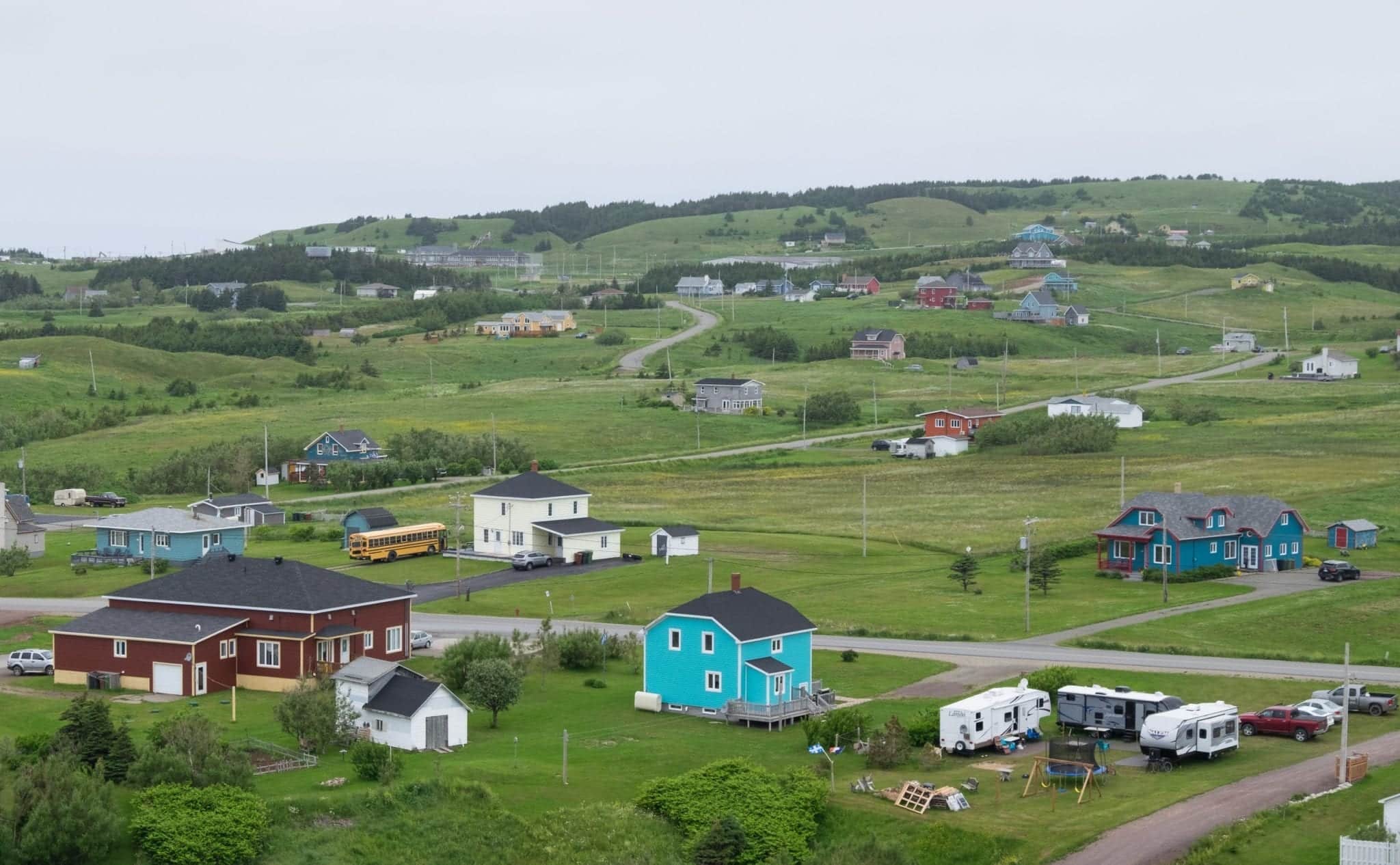
Traveling to the Magdalen Islands
The Îles-de-la-Madeleine are known as the Magdalen Islands in English (or the Maggies, if you’re feeling cheeky). So which term is best? You’re in Quebec, so the French name prevails, even if it’s more of a mouthful: the Îles-de-la-Madeleine. Five syllables: EEL-duh-la-mad-LEN.
The original inhabitants of the Îles-de-la-Madeleine were the indigenous Mi’kmaq people, who hunted the once-abundant walrus; by the late eighteenth century, walrus had been overhunted to extinction in the region. In the seventeenth century, the first French settlers migrated to the islands.
People from the Îles-de-la-Madeleine are called Madelinots, and as Acadians, they tend to have more in common with their Atlantic Canada neighbors than mainland Quebec. Expect to see plenty of Quebec and Acadian flags flown throughout the islands. The population is about 12,700.
The islands are 94% francophone and 6% anglophone. English-speaking Madelinots mostly live in some of the furthest communities of the Magdalen Islands: Grosse-Île, Île d’Entrée, and Old Harry (yes, that’s its real name).
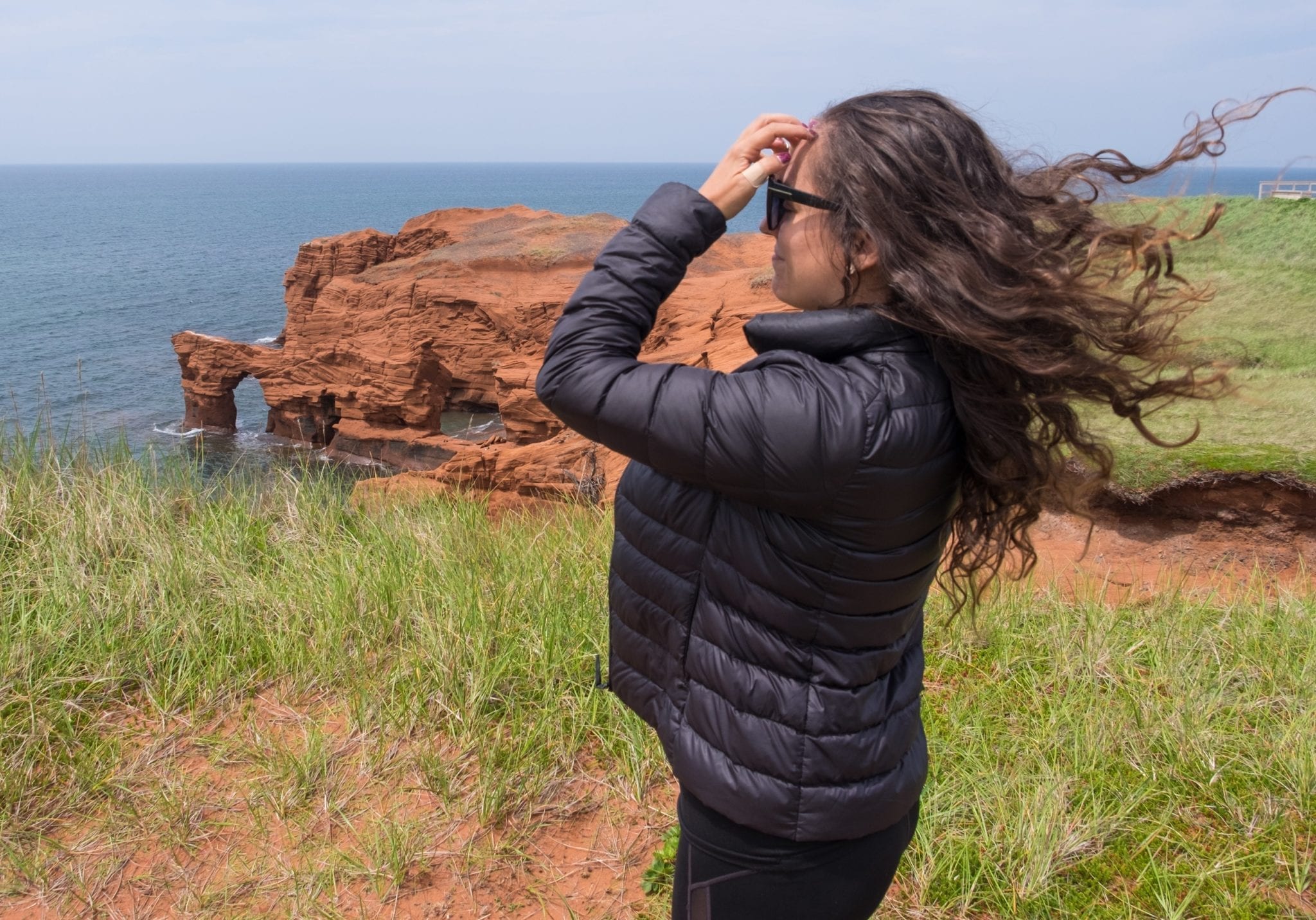
A Windy, Tempestuous Archipelago
When my zodiac lands on the Îles-de-la-Madeleine, I’m struck by how windy it is. The islands are famously blustery, making them a hotspot for kitesurfing and windsurfing. It can throw visitors for a loop — some people are surprised by how hard it is to bike in the wind, and tent campers are often unprepared for the reality of sleeping outdoors!
We arrive in La Grave, a village of tiny gray cottages cheered up with bright yellow and green trim. The Acadian flag, like a French flag with a yellow star in one corner, flies proudly throughout the village. It’s an overcast day, and these punches of color add life to the monochromatic landscape of gray and beige.
But what I most want to see is the cottages — the bright, colorful homes that I’ve seen in posts about the islands. And as soon as we hit the road and drive to the other islands, we see them — tiny purple cottages nestled into nooks, sumptuous yellow homes holding court over the hilly landscape. In the distance are red cliffs topped with lighthouses.
Being in the Îles-de-la-Madeleine feels like living in another time. Everything seems stripped down to the basics — cottages and fishing boats and honest livings. Who needs anything more than that? If you told me that the internet existed here, I might not believe you.
The islands, however, face major issues related to erosion. The surface area of the islands shifts constantly, which makes the total number of islands change continuously (sometimes two islands are joined and sometimes they’re not). While that’s been the case for centuries, the real worries are how this low-lying archipelago will deal with climate change and rising sea levels.
They’re already feeling the effects as harsh storms climb their way up the East Coast. After Hurricane Dorian in 2019, Madelinots have been asking for more aid from the province to protect against further erosion; the province argues that they don’t have enough money to do so. You can read more about that here (in French).
It’s not surprising that the islands have been losing population over the years, as young people leave for opportunities elsewhere and arguably more solid ground.
At the same time, though, there’s hope. In the form of a brewery.
As I enter À l’abri de la Tempête, the islands’ beloved brewery, I feel like I’ve been catapulted into the present day. This funky bar with its modern-day decor feels like it could be somewhere deep in Brooklyn. And it was started by two young women who wanted to bring a modern business to their beloved islands.
Is this the future? More young people coming back, more businesses coming to the islands? Are people going to continue fighting for funding to protect their environment? Are people going to believe in the tourism potential of their hard-to-reach islands and make them even more of a draw?
Perhaps, according a Madelinot woman working in a shop in La Grave.
“Everyone always leaves,” she tells me. “All the young people, they go to study and they don’t come back. But now they’re finally starting to come back. Six babies in my family were born here this year!”
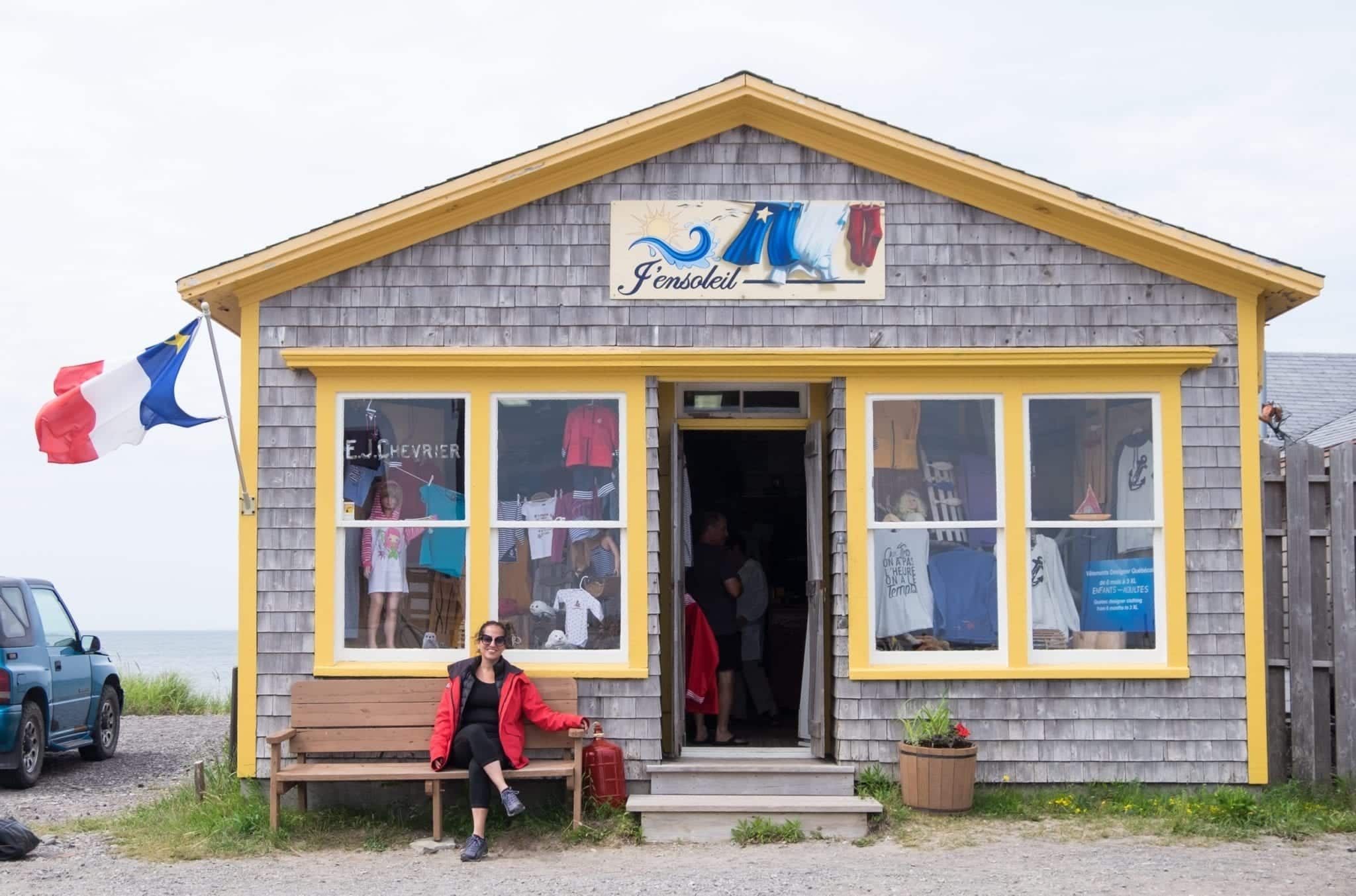
The Best Things to Do in the Îles-de-la-Madeleine
There are so many things to do in the Îles-de-la-Madeleine. Whether you’re focused on outdoor adventure, camping off the beach, or exploring a pretty little village, there’s something for you. Here are some of the best things to do:
Wander the shops and boutiques of La Grave village. La Grave, located on the southern island of L’Île Havre-Aubert, is arguably the most picturesque part of the Magdalen Islands.
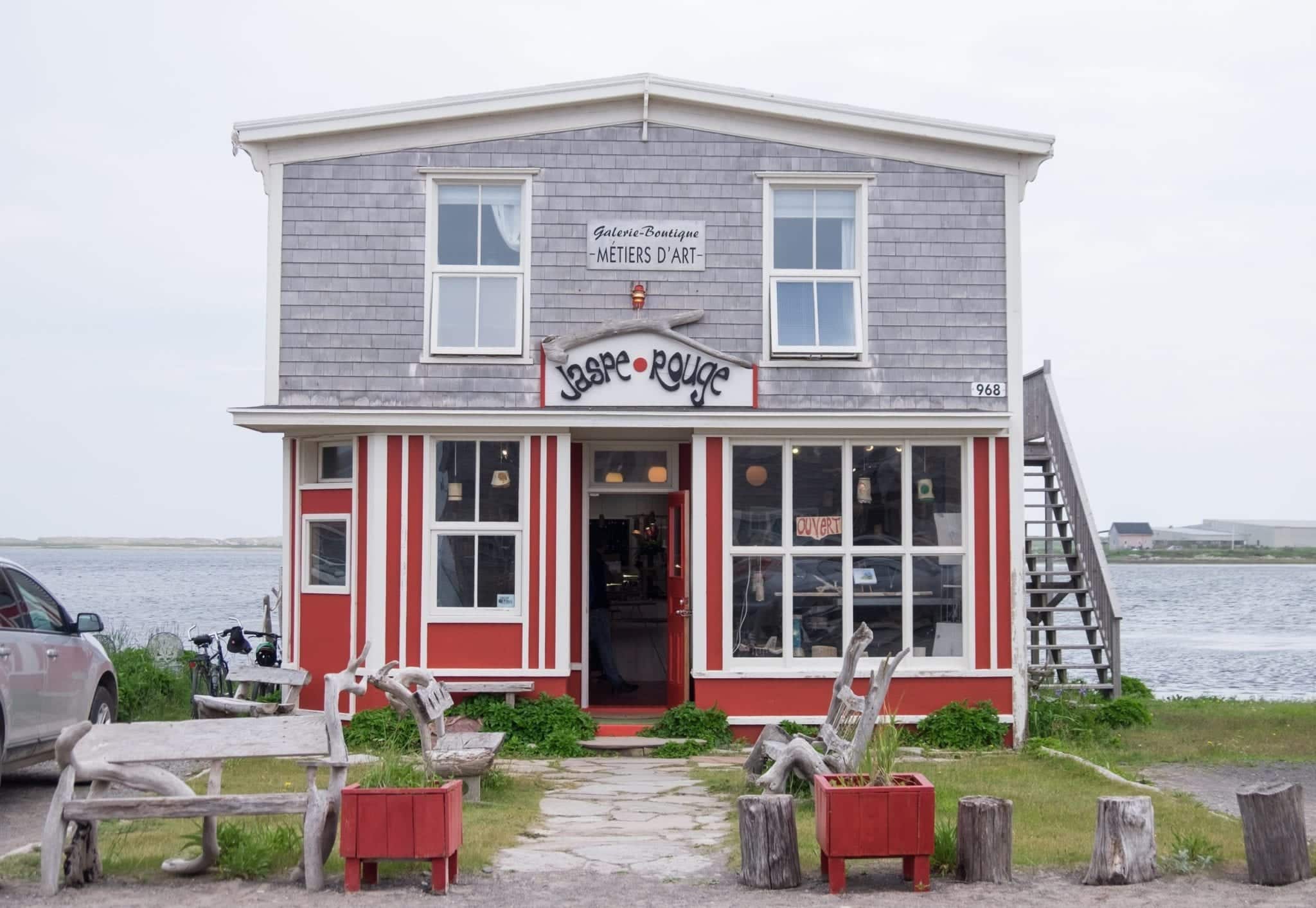
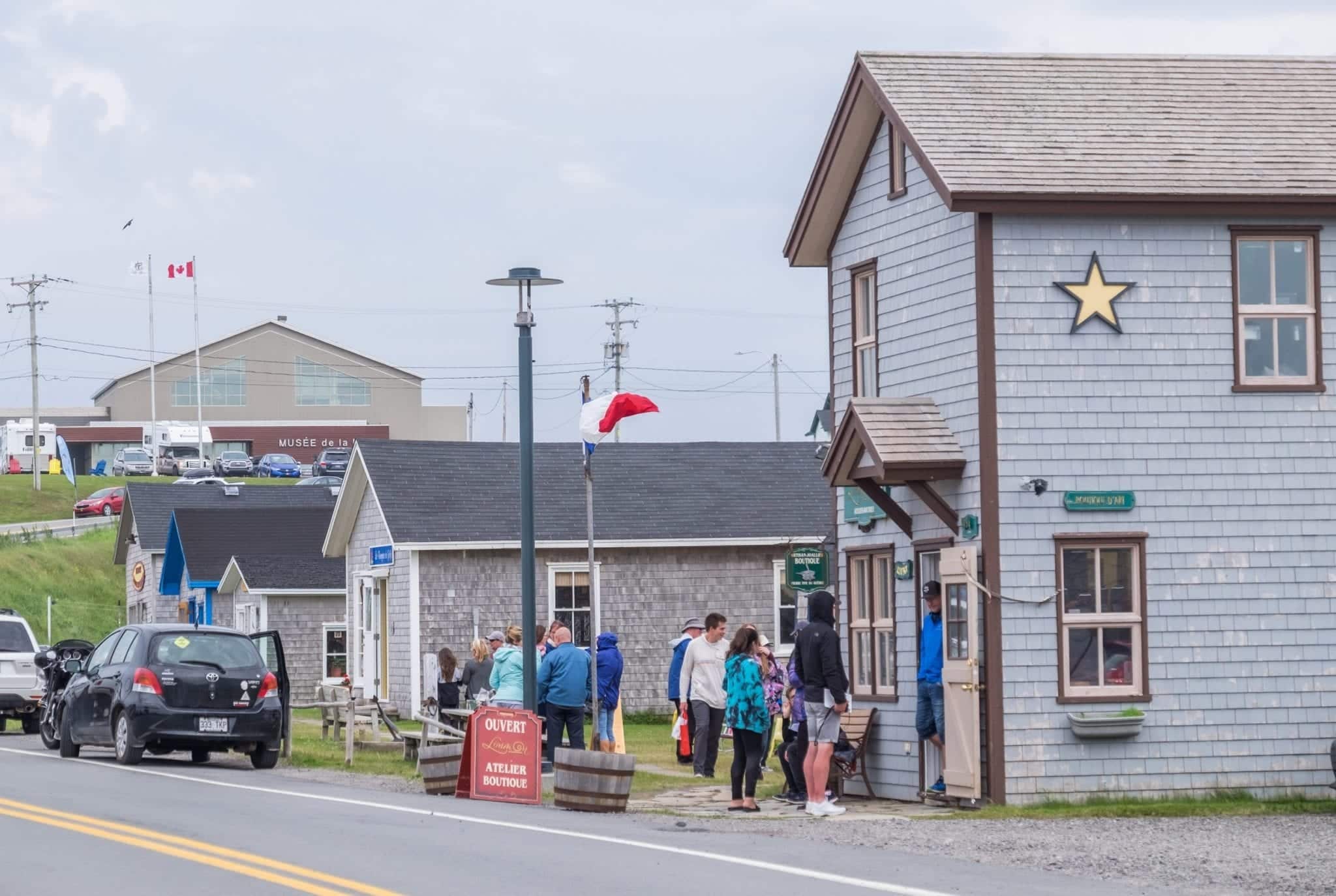
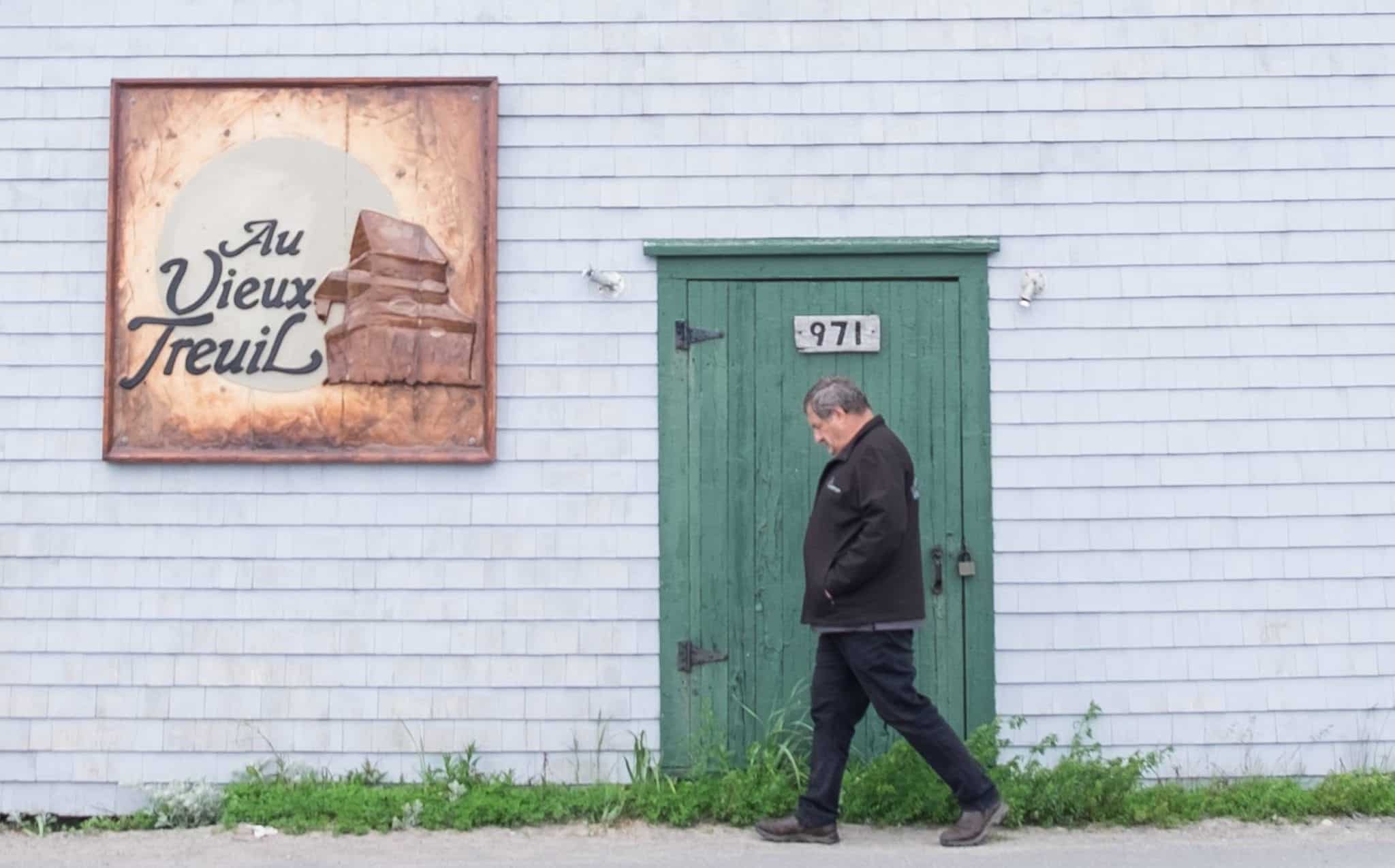
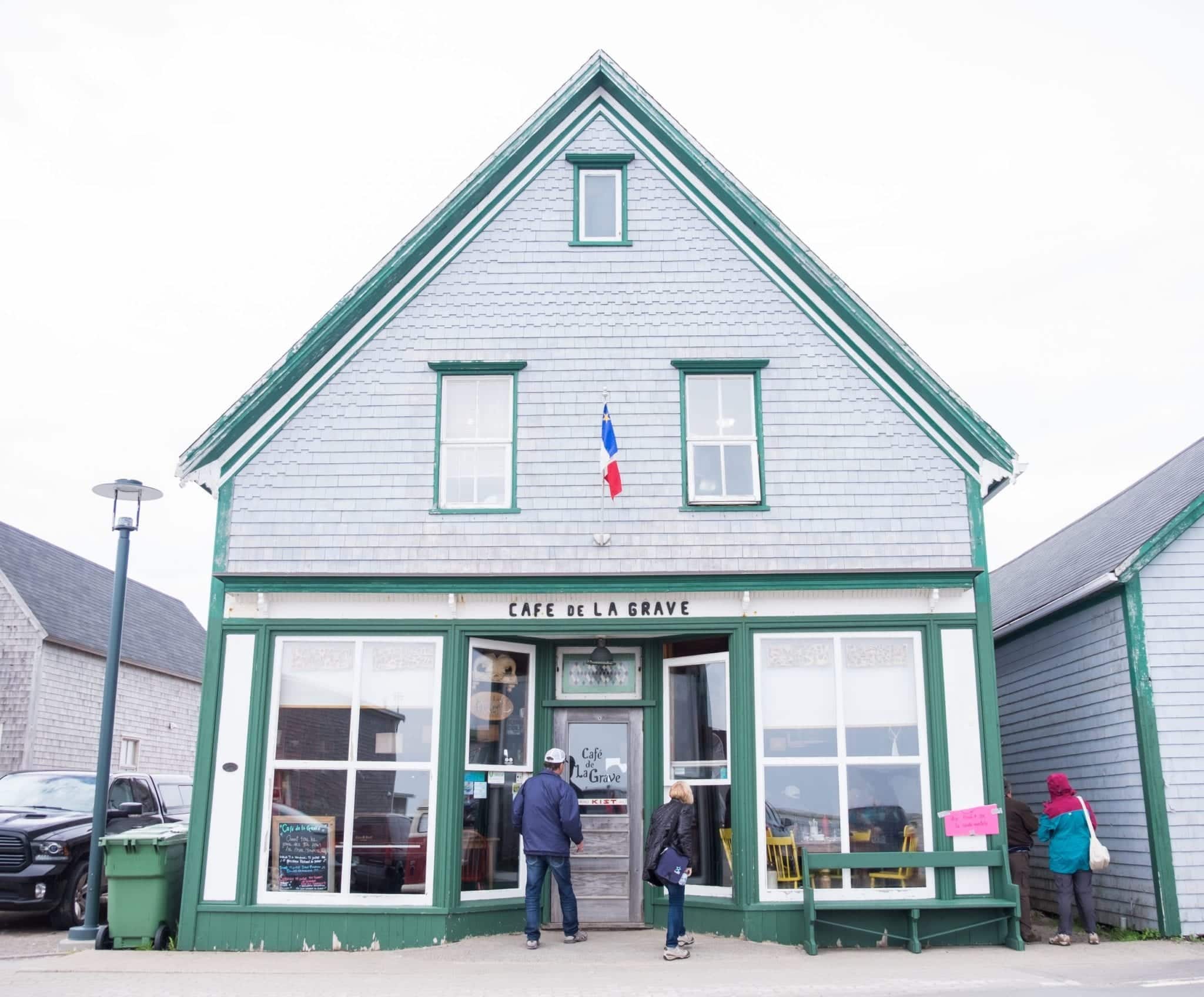
Here in La Grave, the best thing to do is just walk around, check out the shops, and enjoy the seaside setting. I particularly loved the chocolate shop — they make the most fantastic salted caramel truffles!
La Grave is also home to the Musée de la Mer, a museum covering the history of the islands.
If you’re going to have lunch in La Grave, try to go on the earlier side — there are only a few cafes here to satisfy the large crowds. Cailin and I had a great meal at Marché Resto, a mini-mart with a restaurant in the back, and it seemed like only locals knew about it. More about that further down.
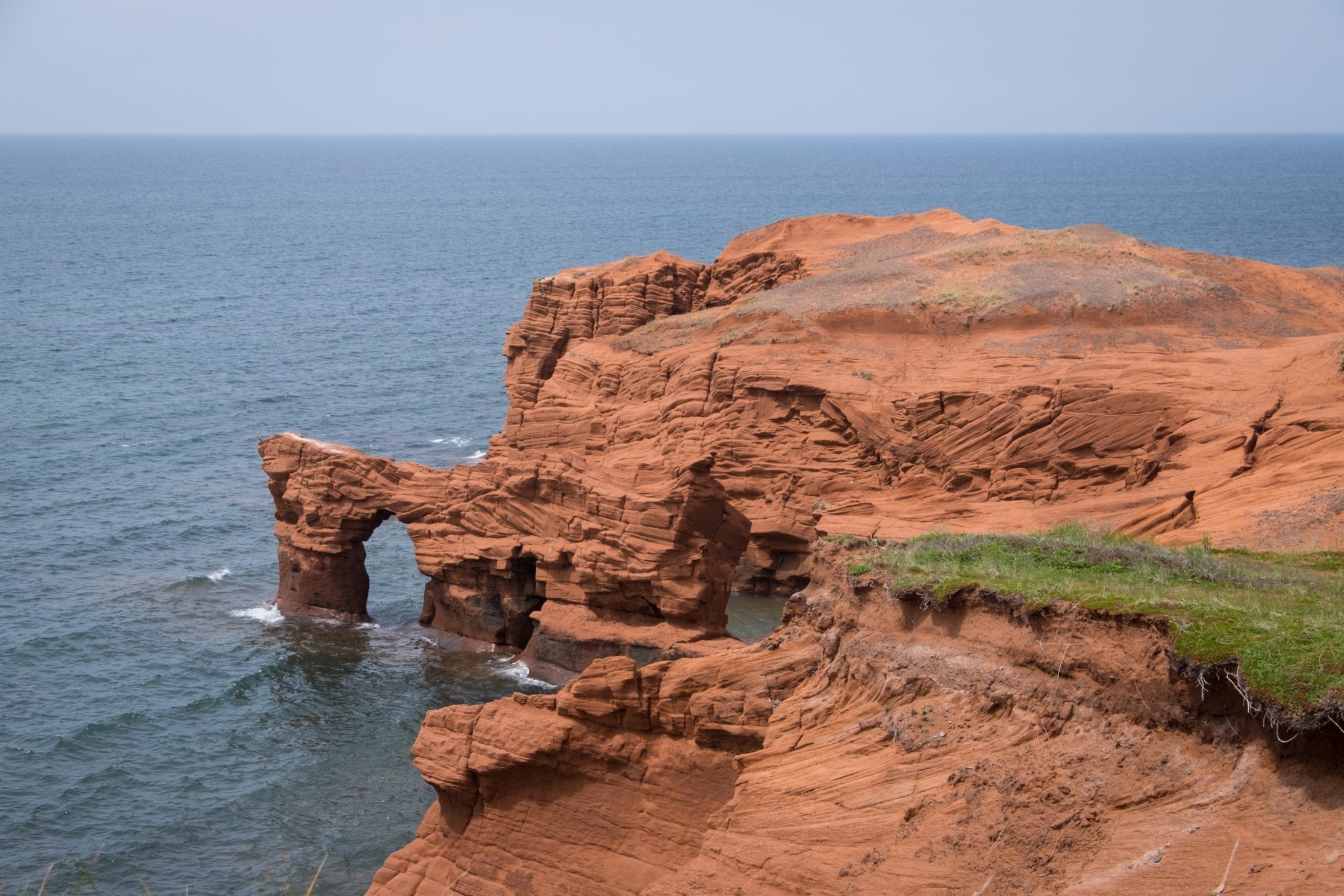
See the red cliffs.
You’ll find gorgeous red cliffs all over the islands — this one, my favorite, is by the Cape Lighthouse on the west coast of Île-du-Cap-aux-Meules. PEI may be more famous for its red dirt and cliffs, but the Magdalen Islands are just as stunning, if not more so!
Do note that exploring the cliffs can be dangerous — many are continuously eroding and may not hold your weight. Stay at least three meters away the edges of the cliffs, keep to marked paths, and follow all signs.
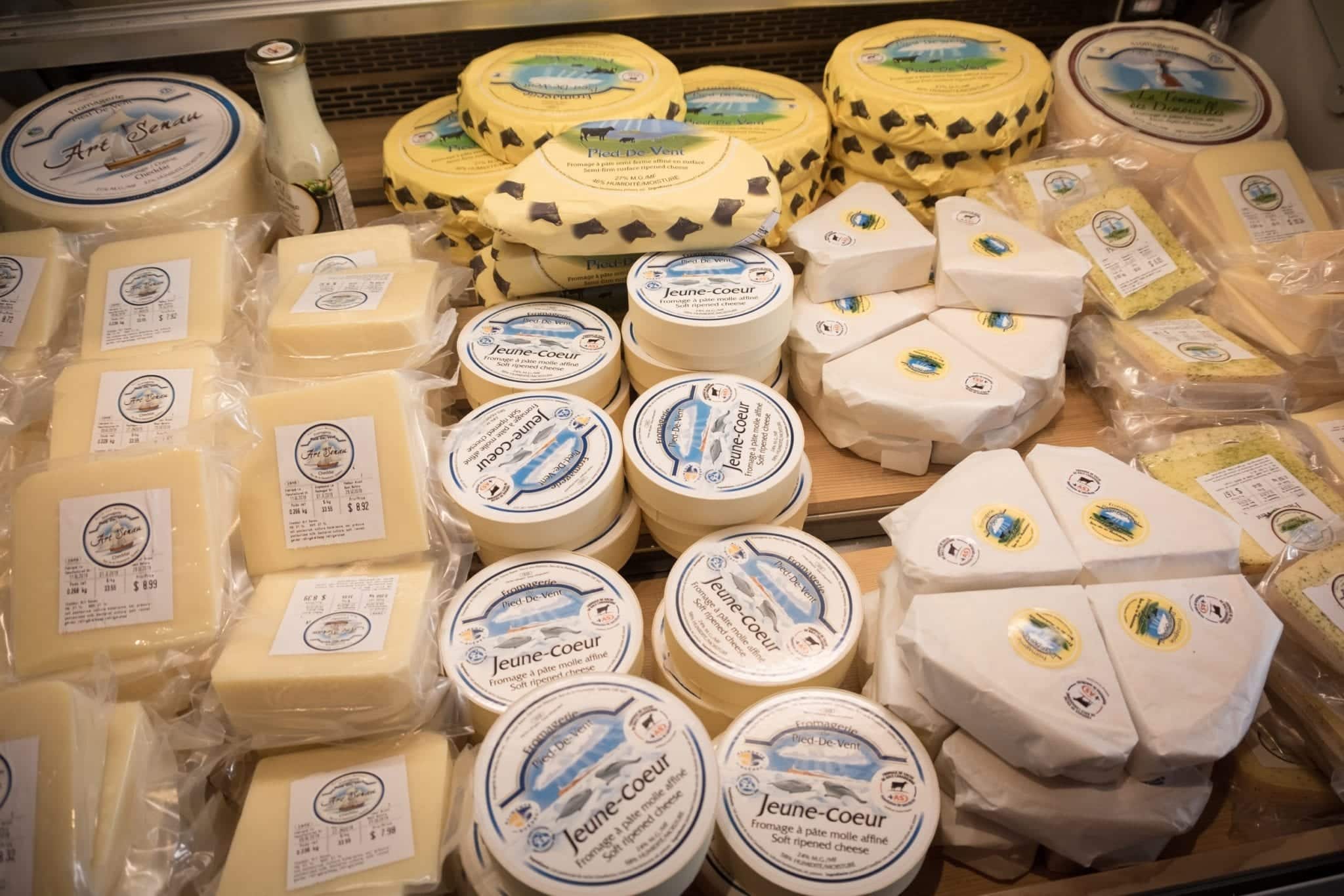
Gorge on local cheeses at Pied de Vent Fromagerie.
One of my favorite stops in the Îles-de-la-Madeleine was La Fromagerie du Pied de Vent. The name Pied de Vent (or “foot of wind”) refers to the sun rays peeking out from the clouds.
You can drop into the fromagerie and buy cheeses, but if you really want to get into it, take the tour! You’ll explore the pasture, witness the cheese-making process, and of course do lots of tasting. The 90-minute tour takes place on selected days between mid-June and late August (call them to make sure) and costs $15 CAD ($11 USD) for adults and $5 CAD ($4 USD) for children.
I definitely bought a few of the cheeses to enjoy back on the ship! (Cailin was less than pleased that I brought back one of the stinkier varieties, but as any cheese connoisseur knows, the stinkier the cheese, the better!) My favorite was the Jeune-Coeur (Young Heart).
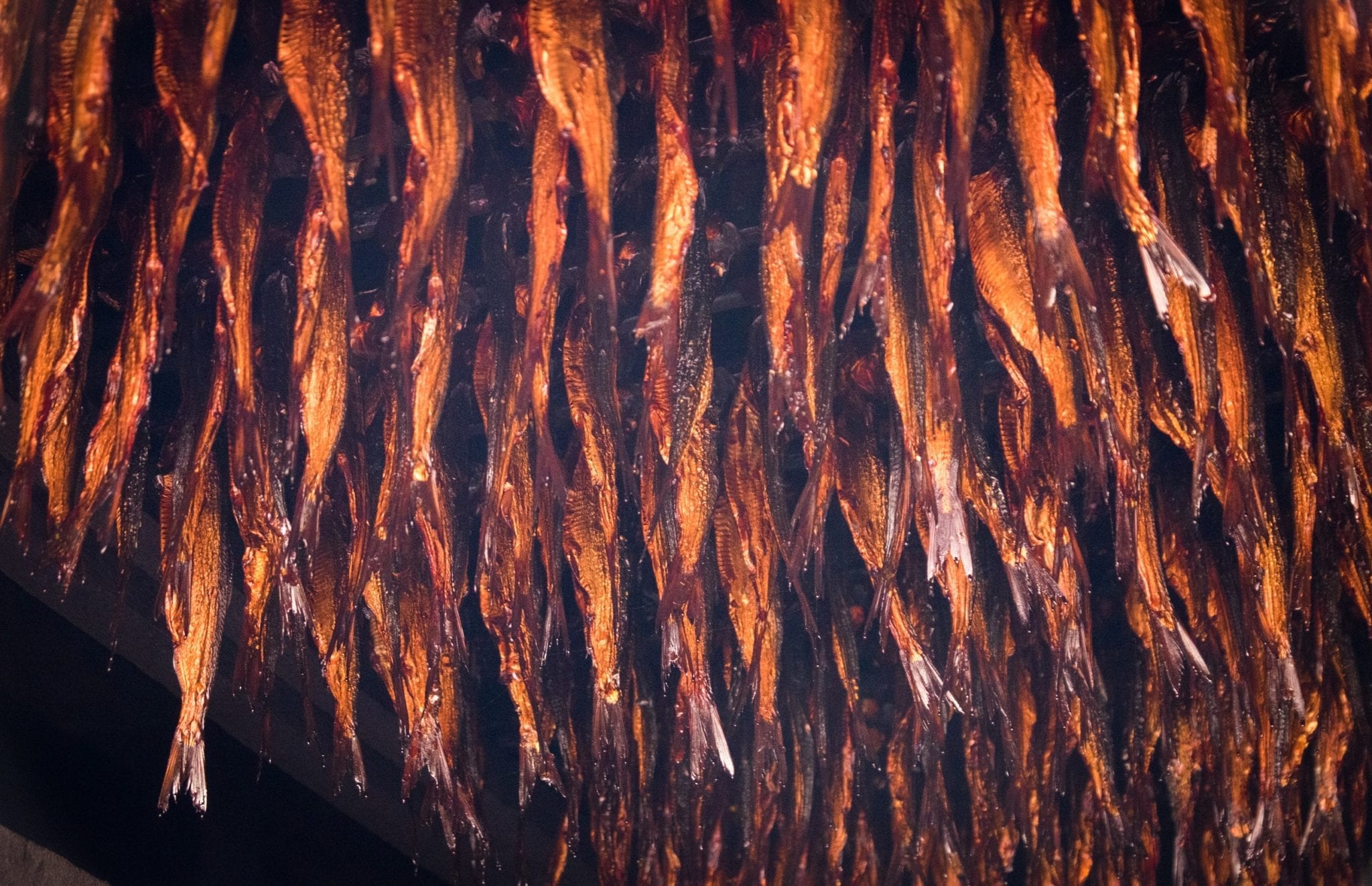
Check out an authentic smokehouse at Le Fumoir d’Antan.
When I saw a herring smokehouse on the itinerary, I’ll admit that I wasn’t too excited. But Le Fumoir d’Antan ended up being one of the highlights of my time on the islands. I expected an unpleasant fish processing plant — but this is a family-run smokehouse where they smoke the fish the same way they have for generations. And it smells AMAZING inside!
Tours including a tasting are offered from June through August at 3:30 PM for $5 CAD ($4 USD) per person, free for children under 5.
There is a tall hill behind the smokehouse that is good to climb for panoramic views of the surrounding cottages. I definitely recommend going up there for a few photos.
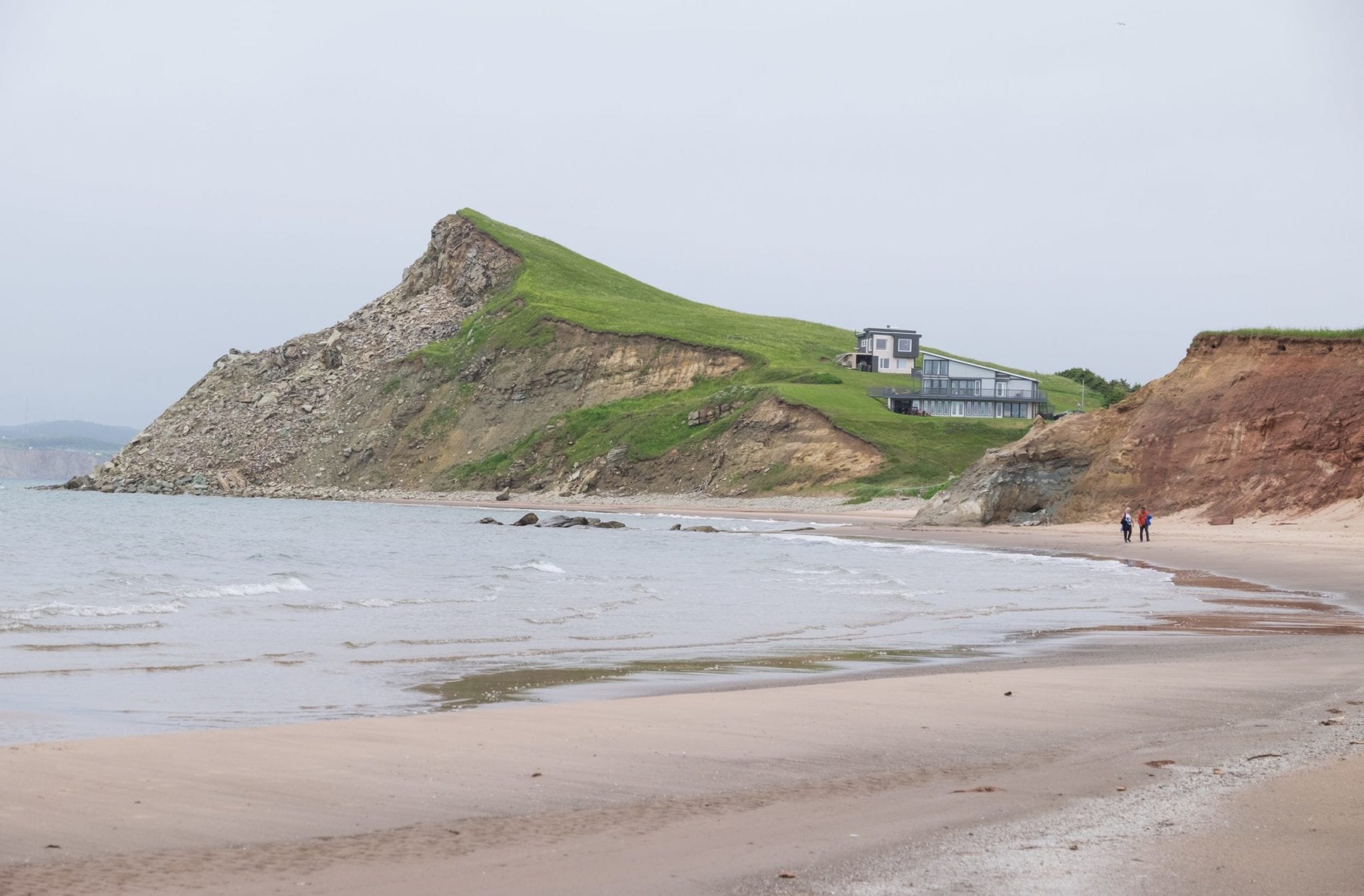
Kitesurfing, kayaking, hiking, and more.
Take advantage of that insane wind by finally learning how to kitesurf! If not, there are plenty of other outdoor activities.
Kiteauxiles offers kitesurfing courses for all levels. L’Istorlet offers kayak and stand-up paddle board rentals and tours, including sailing trips and seal watching kayak excursions. Excursions sur Mer offers a variety of boating and fishing tours, including zodiac tours. The tourism board has a collection of hiking trails listed here; you can also buy a guide to the islands’ trails at their office in Cap-aux-Meules.
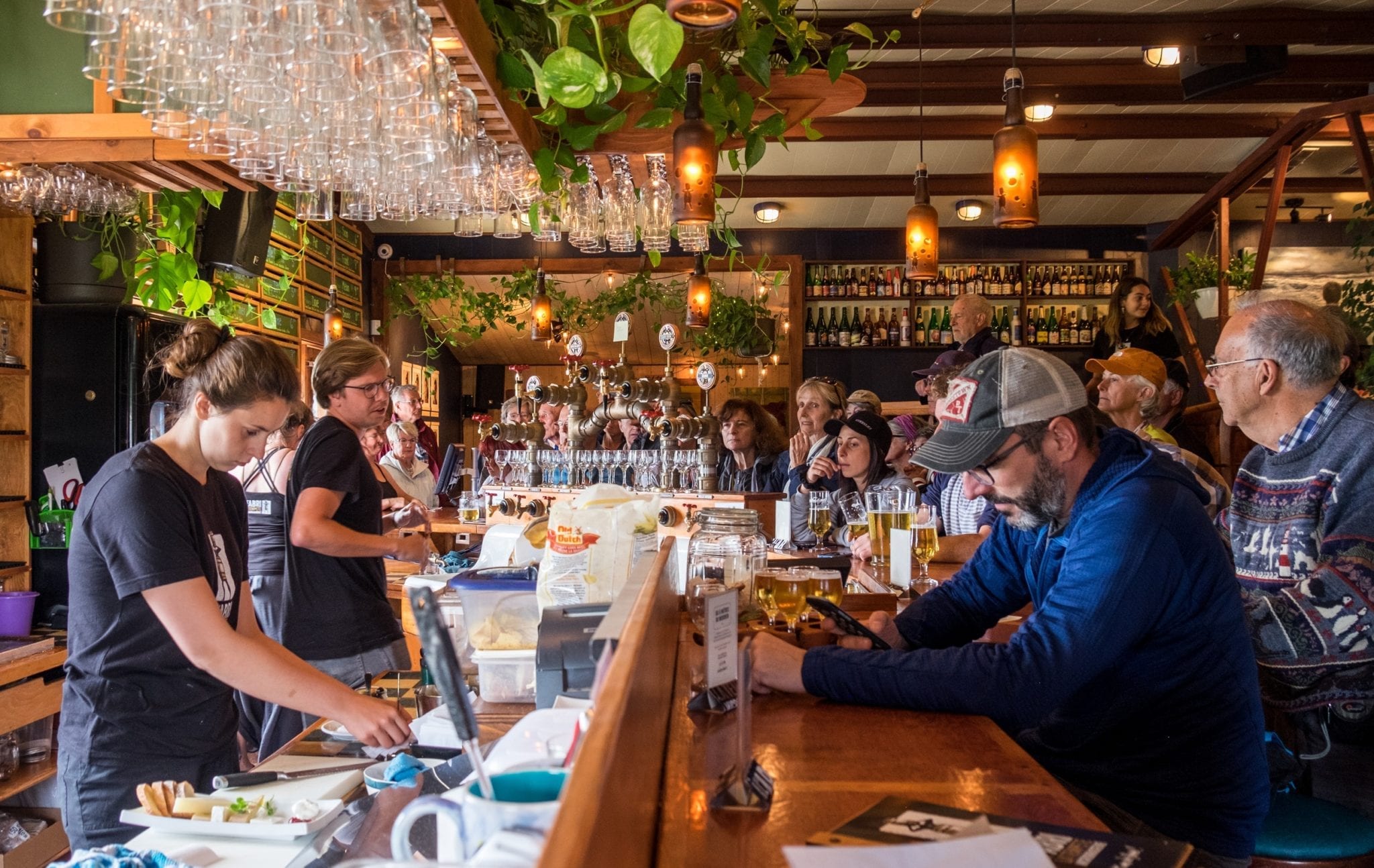
Enjoy craft beers at À l’abri de la Tempête
One of the coolest new establishments on the Îles-de-la-Madeleine is À l’abri de la Tempête, a women-founded brewery with a variety of local beers on tap! The name means “Shelter from the storm” — an apt choice for somewhere as windy as the Magdalen Islands.
The brewery was opened by two women in 2002, who dreamed of opening a new kind of business in their home community. The beers pay homage to the harsh climate and isolated location. You’ll find flavors made with local herbs and algae, and they even have a smoked beer made in collaboration with Fumoir d’Antan, the local herring smokehouse!
Not only does the brewery have great beers — but the entire bar is decorated in style. And it’s set in a former crab processing plant, overlooking sand dunes and the ocean!
The brewers say their beers come with “un peu de folie” — which you could translate as “a bit of fun” or “a bit of madness.” I think both are appropriate here.
If you’re staying for a few days on the Îles-de-la-Madeleine, chances are you’ll have less-than-ideal weather at some point. That’s when you come here — for the shelter from the storm.
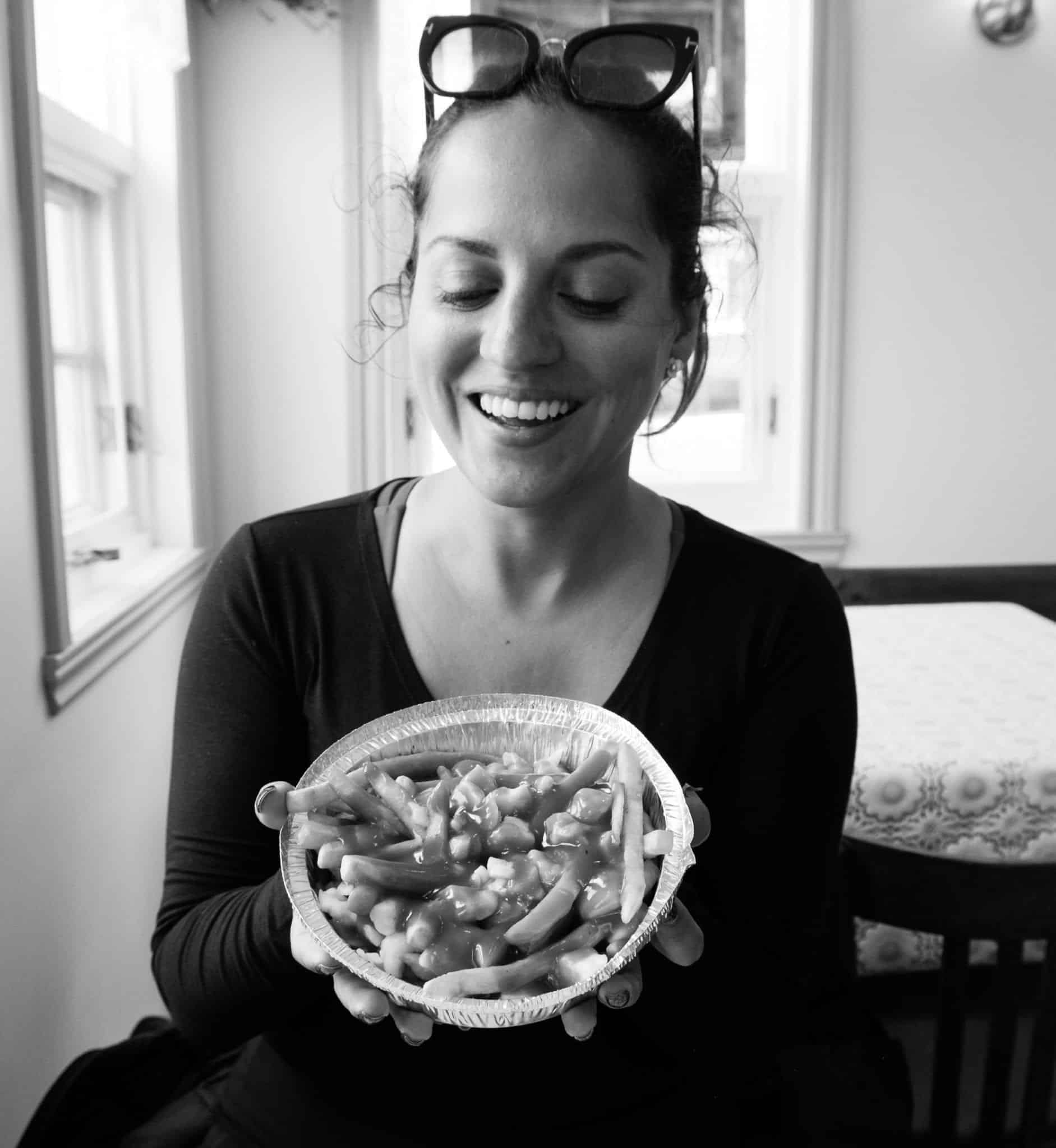
Chat with the incredibly friendly locals.
To be honest, the Quebecois don’t have the greatest reputation among travelers, which isn’t fair to the lovely people who live there. I’ve known many travelers to Montreal who have felt stung after asking, “Parlez-vous anglais?” and getting an eyeroll or a response in rapid-fire French. I wish it weren’t the case, but it’s pretty common.
I had my guard up when I arrived in the Îsles-de-la-Madeleine — I speak French, but did I speak enough French to get by here? I walked into Marché Resto, a mini-mart with a restaurant in the back, unsure of how to order. Why couldn’t we have just gone to a normal restaurant with normal rules? I hoped I didn’t look stupid to the lady behind the counter.
So I summoned my nerve and asked — and she smiled and told me I could order here and pay her, then take the receipt to the back and they’d make the food.
Looking back, I don’t know what I was afraid of. Everyone was eager to welcome visitors and happy to speak English as best they could. And Cailin and I got to enjoy fresh lobster rolls and a big dish of poutine.
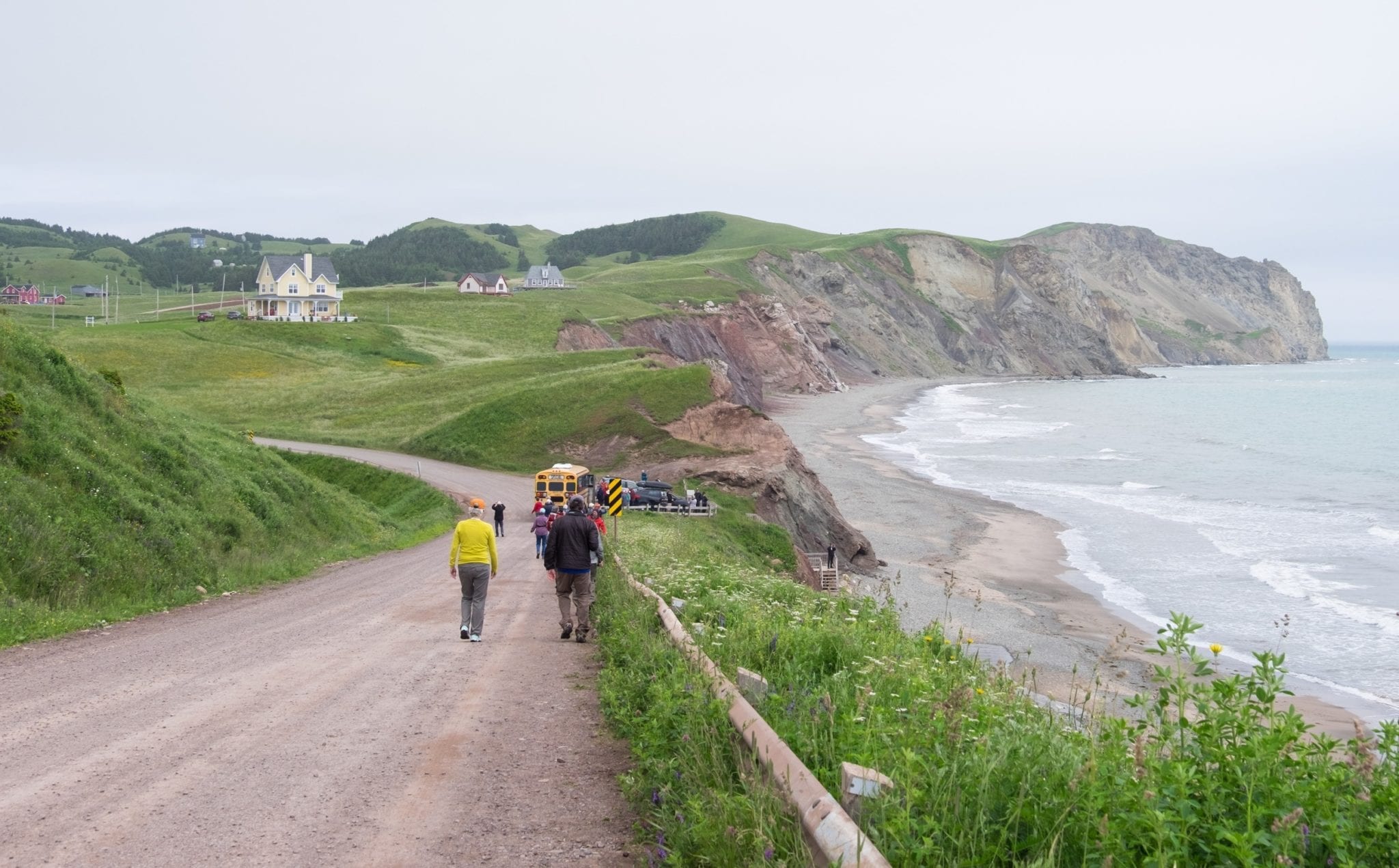
How to Get to the Îles-de-la-Madeleine
They don’t make it easy to get to the Îles-de-la-Madeleine. It can be complicated, time-intensive, expensive, or all three. But if you’re willing to invest effort in getting to these islands, you’ll be rewarded.
There are direct flights to the Îles-de-la-Madeleine from Quebec City, Montreal, and Gaspé. However, these flights tend to be very expensive, especially during the summer months. Check Skyscanner for the cheapest rates.
There are regular CTMA Ferries to the Îles-de-la-Madeleine from Souris, Prince Edward Island. The journey takes about five hours each way. Throughout the year the ferry departs PEI at 2:00 PM and departs the Îles-de-la-Madeleine at 8:00 AM; additional departures are scheduled in July and August. Book as soon as you can because this ferry tends to sell out.
The rates jump up sharply during high season, from June 15-September 14 . Low season/high season rates are $35.10/54.30 CAD ($26/41 USD) for adults, $28.60/43.90 CAD ($22/33 USD) for seniors, $14.15/$27.35 CAD ($11/21 USD) for kids under 12, and free for kids under 5. Vehicles under 21 feet are $71.20/101.25 CAD ($54/76 USD). See the web site for additional vehicles.
There is a bus to the Îles-de-la-Madeleine from Quebec City with Autobus les Silons. It leaves weekly from mid-June through early September, departing Quebec City on Thursdays and departing the islands on Wednesdays. It stops in Riviere-du-Loup, Edmundston, Fredericton, Moncton and Charlottetown and takes 21.5 hours altogether, including the ferry from PEI. The full trip from Quebec to the islands costs $265 CAD ($199 USD) one-way and $429 CAD ($323 USD) round-trip for adults; see the site for other pricing.
There is one weeklong cruise to the Îles-de-la-Madeleine from Montreal on CTMA Cruises. You leave Montreal on Friday afternoon and you arrive on the islands by Sunday morning, staying through Tuesday evening. The cruise does a stop in Gaspé, Quebec, allowing a seven-hour stopover to explore the region, then the ship returns to Montreal early Friday morning.
If you have the time and money, this is a nice way to get to the islands for three days without worrying about the travel logistics. Rates for inside cabin with shared bathroom start at $1,019 CAD ($768 USD), based on double occupancy, and outside cabins with private bathroom start at $1,419 CAD ($1,070 USD).
Note: I traveled to the Îles-de-la-Madeleine on OneOcean Expeditions’ Canada’s East Coast Fins and Fiddles route, which is no longer running in 2023.
Some locals sail to the Îsles-de-la-Madeleine from Prince Edward Island and Cape Breton, Nova Scotia. While the vast majority of fishermen will not take a stranger with them on this journey, you never know — make the right connections and charm the right people and you might be able to hop on a sailboat there. Keep in mind this is at your own risk.
READ MORE:
My Favorite Moments Cruising Eastern Canada with OneOcean Expeditions
Where to Stay in the Îles-de-la-Madeleine
Where’s the best place to stay in the Îles-de-la-Madeleine? Accommodation in the Îsles-de-la-Madeleine tends to book out far in advance in the summer months, so I urge you to book accommodation as early as possible.
You won’t find large hotels here. Instead, focus on small guesthouses, B&Bs, and hostels.
Camping is a popular option in the Îles-de-la-Madeleine — though keep in mind that it’s extremely windy and there aren’t many trees to shelter you! Many campgrounds offer cabins as well as campsites. Three of the most popular campgrounds are Parc du Gros-Cap, Camping Belle Plage, and La Salicorne.
Top-Rated Îles-de-la-Madeleine Accommodation
Upscale B&B: La Butte Ronde
Mid-range Guesthouse: Motel L’Archipel
Hostel: Auberge de Gros-Cap or Paradis Bleu
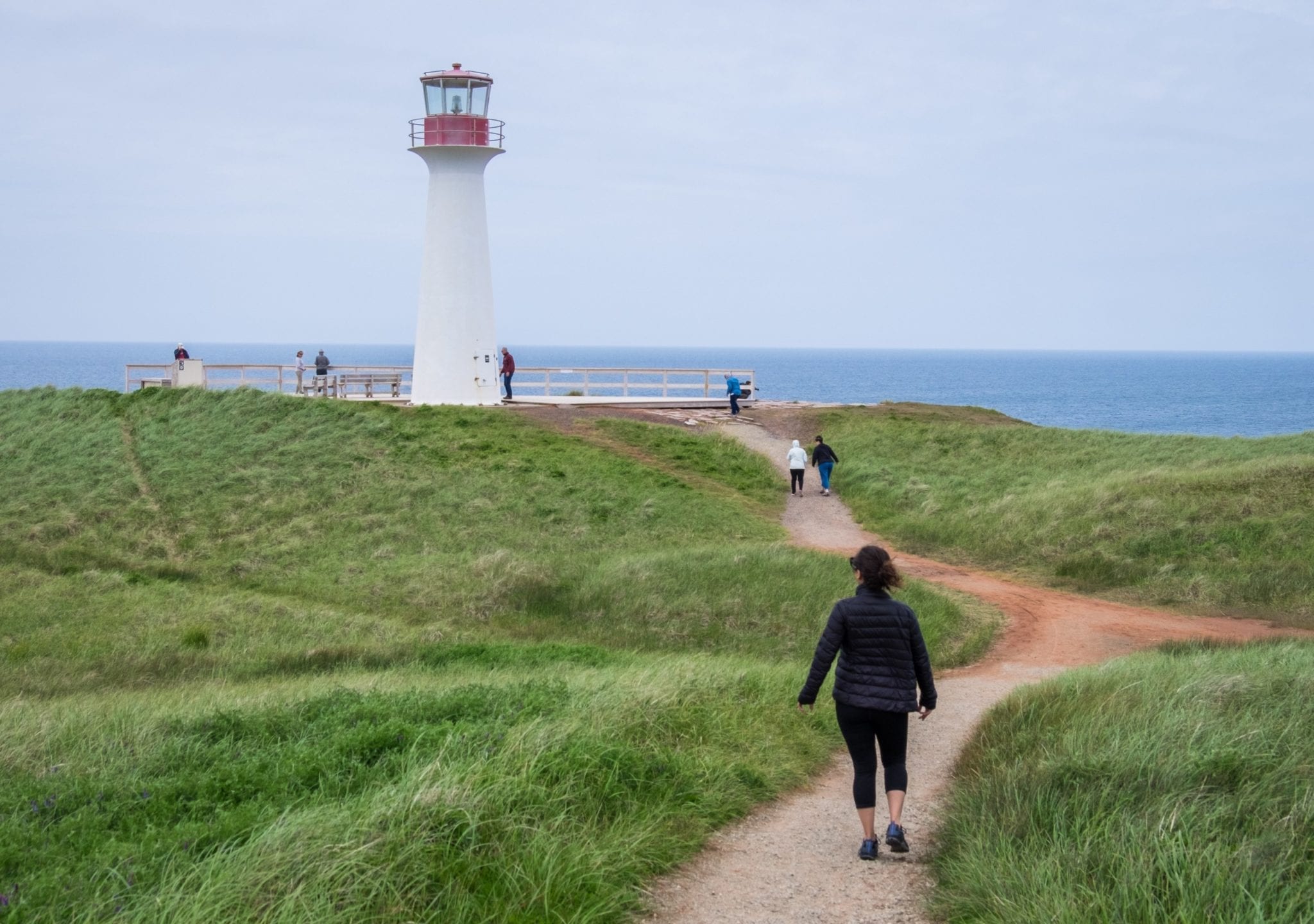
Travel Insurance for the Îles-de-la-Madeleine
While the Îles-de-la-Madeleine are an incredibly safe destination — the kind of place where everyone knows each other and people leave their doors unlocked — it’s essential to have travel insurance. Even with a country with good healthcare like Canada, travel insurance can save your health and finances in your time of need.
In the Îles-de-la-Madeleine, you’re dealing with a weather-vulnerable destination. This could end up impacting you if your flights or ferry are canceled.
Additionally, travel insurance will cover you if the islands’ crazy wind knocks you off your bike, or if you sprain your ankle while hiking up one of the hills to see the view.
Get yourself covered — I use and recommend World Nomads Travel Insurance for trips to Canada.
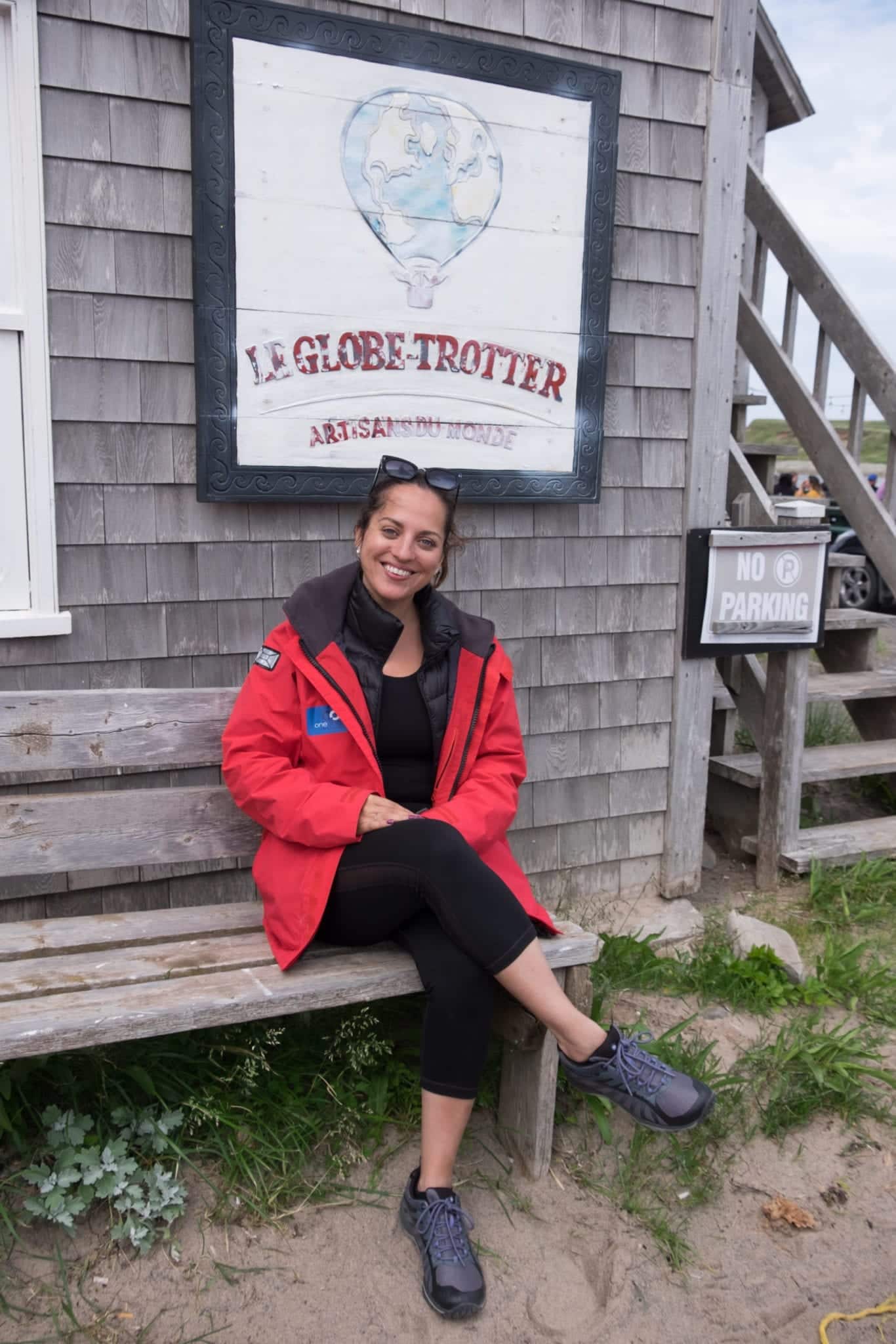
The Takeaway
I enjoyed the Îles-de-la-Madeleine so much that I’m hoping to return next summer — most likely in tandem with a trip to PEI, another place I want to return. Now that I know what I know, this trip will require a lot of advance preparation. Stay tuned to see how it goes!
Looking back to my time on the islands, in one shop I held up a shirt with French on it and tried to parse out the meaning — it was an expression I hadn’t heard. “Qu’est-ce que ça veut dire? What does this mean?” I asked the woman who worked behind the counter.
“It is like, I miss the islands, I think,” she offered.
“Ah. So it’s like les îles me manquent.“
“Oui! Les îles me manquent!” she exclaimed with a smile. “Très bien.“
Two months later, les îles still do, in fact, me manquent. I hope I get back there soon.
READ NEXT:
The Cabot Trail: Nova Scotia’s Best Road Trip
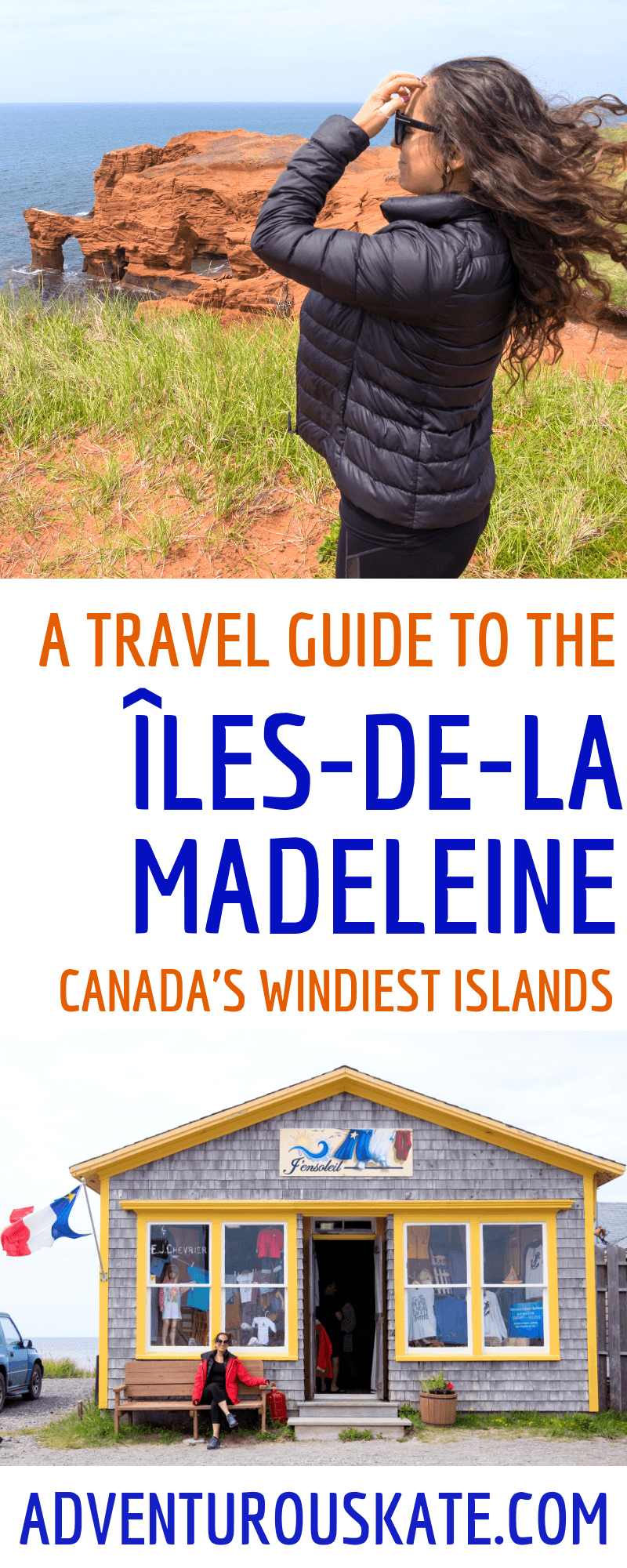
This post is brought to you by OneOcean Expeditions, who hosted me on their East Coast Fins and Fiddles expedition through Eastern Canada. All opinions, as always, are my own.